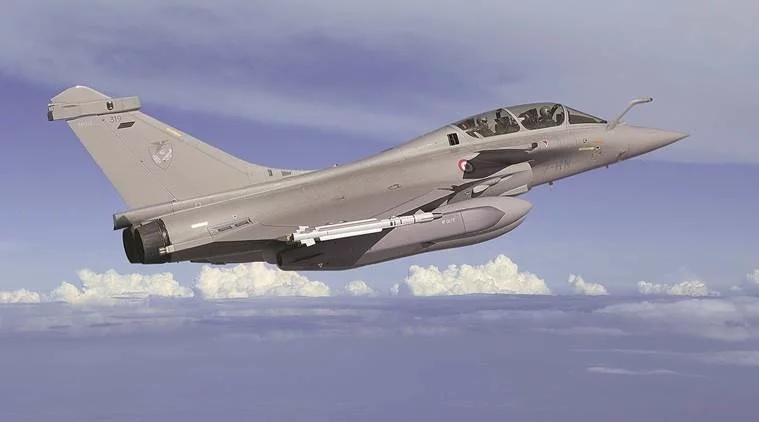Rafale Decision: An Exercise in Judicial Caution

The Supreme Court dismissed all the petitions seeking an inquiry into the Rafale deal today, December 14. A Bench comprising of the Chief Justice of India, Ranjan Gogoi, Justice SK Kaul and Justice KM Joseph delivered the Judgement authored by the Chief Justice. The Court dealt with three issues raised by the petitioners; the decision-making process, differences in pricing, and the choice of the Indian Offset Partner (IOP).
Taking a more cautionary stand, the Court began by restricting its scope of Judicial Review. Starting with the decision of the Supreme Court in Jagdish Mandal v. State of Orissa and Ors., where the Court had confined its scope of Judicial Review in contractual matters to the decision-making process, unreasonableness and mala fides (actions not taken in good faith). They consequently held that there can be no Judicial Review even if it results in a procedural error to the prejudice of the tenderer since commercial interests cannot be protected under Judicial Review.
In this vein, Chief Justice Gogoi made it clear that the terms of tenders are not open to judicial scrutiny unless they have been found to be “tailor-made to benefit any particular tenderer or a class of tenderers”. He further reiterated that the scrutiny exercised would be subject to the Wednesbury Principle of Reasonableness and the absence of mala fides or favouritism. The Wednesbury Principle of Reasonableness refers to a situation where a decision taken was so unreasonable that no reasonable person would ever have taken it.
Also See | Explainer: Is Rafale Deal India's Biggest Defence Scam Ever?
Paragraph 9 of the Judgement set the tone for what would follow, “We also cannot lose sight of the tender in issue. The tender is not for construction of roads, bridges, etc. It is a defence tender for procurement of aircrafts. The parameter of scrutiny would give far more leeway to the Government, keeping in mind the nature of the procurement itself.”
This was expressed more lucidly at paragraph 11, “It is our considered opinion/view that the extent of permissible judicial review in matters of contracts, procurement, etc. would vary with the subject matter of the contract and there cannot be any uniform standard or depth of judicial review which could be understood as an across the board principle to apply to all cases of award of work or procurement of goods/material. The scrutiny of the challenges before us, therefore, will have to be made keeping in mind the confines of national security, the subject of the procurement being crucial to the nation’s sovereignty.”
Also Read | Rafale Deal: Government Explanation is Misleading
Thus, after confining its scope for judicial scrutiny and setting a very high bar for applying it, the Court appears to have accepted the government’s submissions on the matter. However, the last line in the concluding paragraph suggests that the matter may not be entirely over. Here Chief Justice Gogoi stated, “We, however, make it clear that our views as above are primarily from the standpoint of the exercise of the jurisdiction under Article 32 of the Constitution of India which has been invoked in the present group of cases.”
The Decision-Making Process
The Court accepted the Government’s submissions that the high man-hours Hindustan Aeronautics Limited (HAL) required to manufacture the aircraft as well as Dassault Aviation’s reluctance to accept responsibility for the aircraft manufactured in India resulted in the three-year stalemate. In this regard the Court held that, “[w]e are satisfied that there is no occasion to really doubt the process, and even if minor deviations have occurred, that would not result in either setting aside the contract or requiring a detailed scrutiny by the Court. … Broadly, the processes have been followed. The need for the aircrafts is not in doubt. The quality of the aircraft is not in question. It is also a fact that the long negotiations for procurement of 126 MMRCAs [Medium Multi Role Combat Aircraft] have not produced any result, and merely conjecturing that the initial RFP [Request for Proposal] could have resulted in a contract is of no use.”
Also See | Rafale Deal: Did the Government Ignore HAL?
With regard to reducing the number of aircraft in the ‘new deal’ the Court held, “We cannot sit in judgment over the wisdom of deciding to go in for purchase of 36 aircrafts in place of 126. We cannot possibly compel the Government to go in for purchase of 126 aircraft. This is despite the fact that even before the withdrawal of RFP, an announcement came to be made in April 2015 about the decision to go in only for 36 aircrafts.”
However, the Court also took note of the amount of time that passed between the conclusion of the new deal and the petitions filed. In this regard the Court stated, “We may also note that the process was concluded for 36 Rafale fighter jet aircrafts on 23rd September, 2016. Nothing was called into question, then. It is only taking advantage of the statement by the ex-President of France, Francois Hollande that these set of petitions have been filed, not only qua the aspect which formed the statement, that is, the issue of IOPs [Indian Offset Partners] but also with respect to the entire decision-making process and pricing. We do not consider it necessary to dwell further into this issue or to seek clause-by-clause compliances.”
Also See | In Rafale Deal, Not Dassault, Perhaps Indian Govt Had Problem With HAL: D Raghunandan
Difference in Pricing
The Court was initially reluctant to consider the difference in pricing. However, in order “to satisfy the conscience of the Court” the pricing details were sought in a sealed-cover. These details have not been made public, nor does Parliament have any specific knowledge of the contents. On the basis of the contents of the sealed-cover, the Court held; “Suffice it to say that as per the price details, the official respondents claim there is a commercial advantage in the purchase of 36 Rafale aircrafts. The official respondents have claimed that there are certain better terms in IGA [Inter-Governmental Agreement] qua the maintenance and weapon package. It is certainly not the job of this Court to carry out a comparison of the pricing details in matters like the present. We say no more as the material has to be kept in a confidential domain.”
Also Read | Rafale Deal: Govt’s Reply to SC Reads More Like a Cover-up for PM Modi’s Culpability
Choice of Indian Offset Partner
The petitioners had challenged a secrecy clause that was inserted into the Defence Procurement Procedure (DPP) of 2013, with retrospective effect after Dassault Aviation’s deal with Reliance Aerostructure Limited. However, the Government had submitted that the choice of the IOP was out of its hands. This position is technically correct since the DPP 2013 gives complete discretion to the vendor or the original equipment manufacturer to choose their IOP.
Also See | The Rafale Mystery Deepens : Why did Dassault Invest in An Obscure Anil Ambani Company?
In this regard, the Court had held, “Once again, it is neither appropriate nor within the experience of this Court to step into this arena of what is technically feasible or not. The point remains that DPP 2013 envisages that the vendor/OEM will choose its own IOPs. In this process, the role of the Government is not envisaged and, thus, mere press interviews or suggestions cannot form the basis for judicial review by this Court, especially when there is categorical denial of the statements made in the Press, by both the sides. We do not find any substantial material on record to show that this is a case of commercial favouritism to any party by the Indian Government, as the option to choose the IOP does not rest with the Indian Government.”
Get the latest reports & analysis with people's perspective on Protests, movements & deep analytical videos, discussions of the current affairs in your Telegram app. Subscribe to NewsClick's Telegram channel & get Real-Time updates on stories, as they get published on our website.























